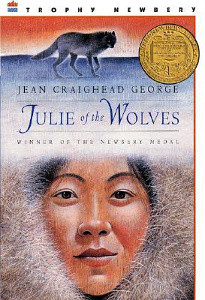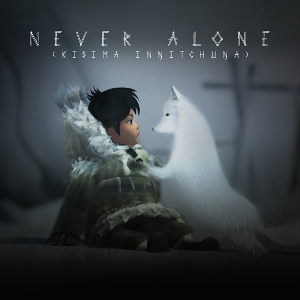
Series: Julie of the Wolves, #1
First Published: 1st January, 1972
Genre: Contemporary Young Adult
Available: Amazon.com | Amazon UK | Barnes & Noble
Miyax, a Yupik girl, runs away from home after being attacked. She has to survive in the Alaskan wilderness, using the skills her father has taught her and with assistance from a wolf pack.
I did enjoy some of the aspects of the story. The feel of the landscape and how the animals interacted was there, which is something I look for in survival stories. I liked the change between the names Julie and Miyax in the narration depending on her current situation. Some of the thoughts on animal behaviour were dated, but I’d hope no one would use this as a natural history guide anyway.
However, the descriptions of Miyax/Julie’s culture and herself were often exoticised or laced with unfortunate implications. An example was the description of Miyax’s looks. It’s said she’s an “Eskimo beauty”, which comes with the implication of “pretty for an Eskimo”. Not properly pretty, like a Northern European. Add in her thinking she looked more beautiful when she was starving, because her face was thin like a European. Even when she changes her attitudes towards Europeans, she doesn’t start to think of herself as beautiful.
When Miyax decides to embrace Yupik traditions, she does so in a very black-and-white way. The real world isn’t as simplistic as traditional is good and modern is bad. Someone can hunt in traditional ways and enjoy chocolate cake. They can travel on foot and carry a phone. I wasn’t comfortable with the vibe that the only way to connect with her culture was to exist in the past, as it ignores the modern reality of Yupik people.
There’s also the issue that Miyax’s husband from an arranged marriage is non-neurotypical and ends up trying to rape her (the attack that leads her to run away). Non-neurotypical people are often portrayed as violent in books, but are more likely to be the victims of violence for real. It’s not a good trope to be reinforcing.
I couldn’t get away from how much like an outsider’s view the story read. With the added helping of the attempted rape scene, I didn’t enjoy it very much.

